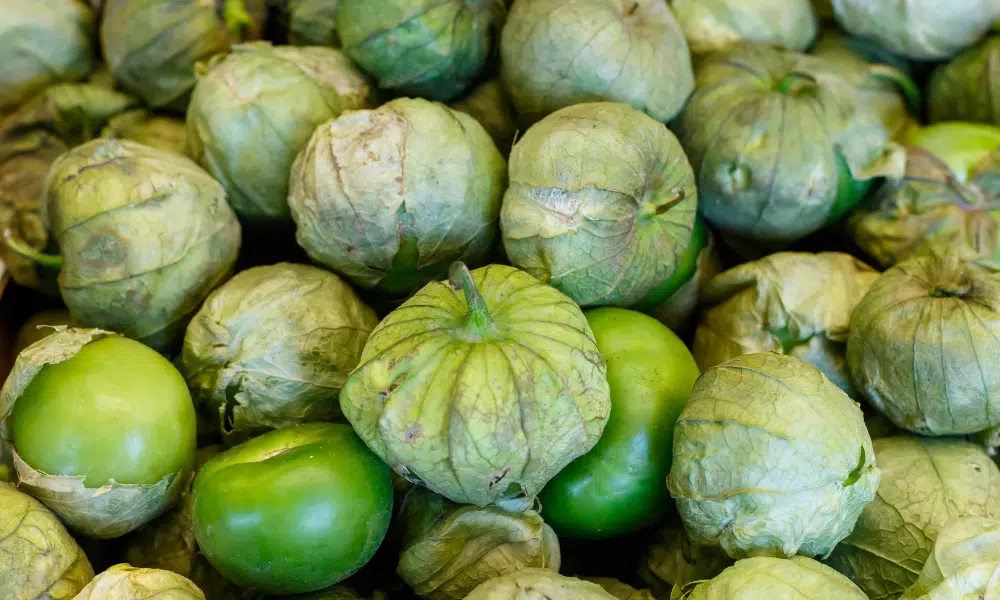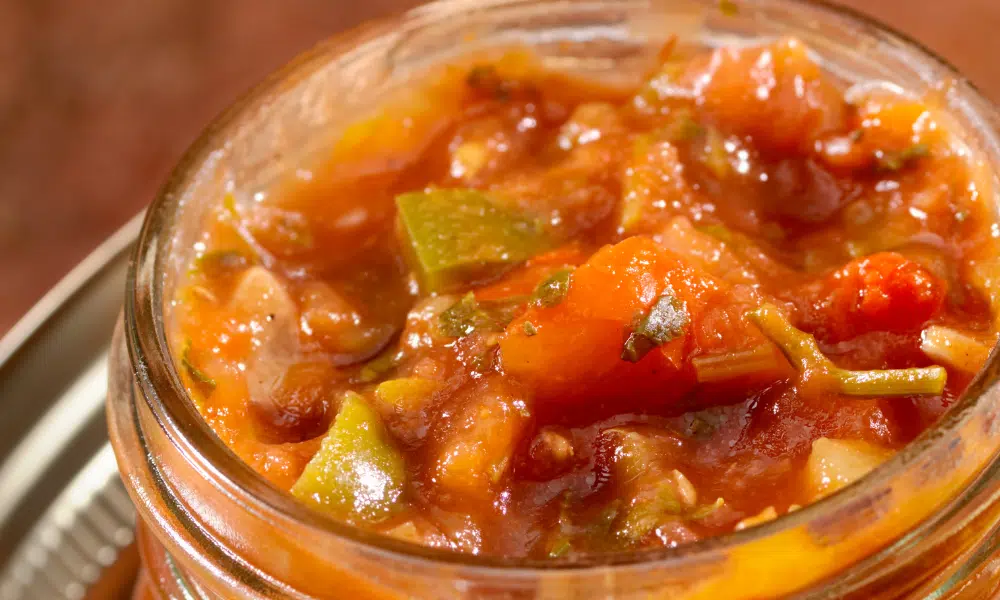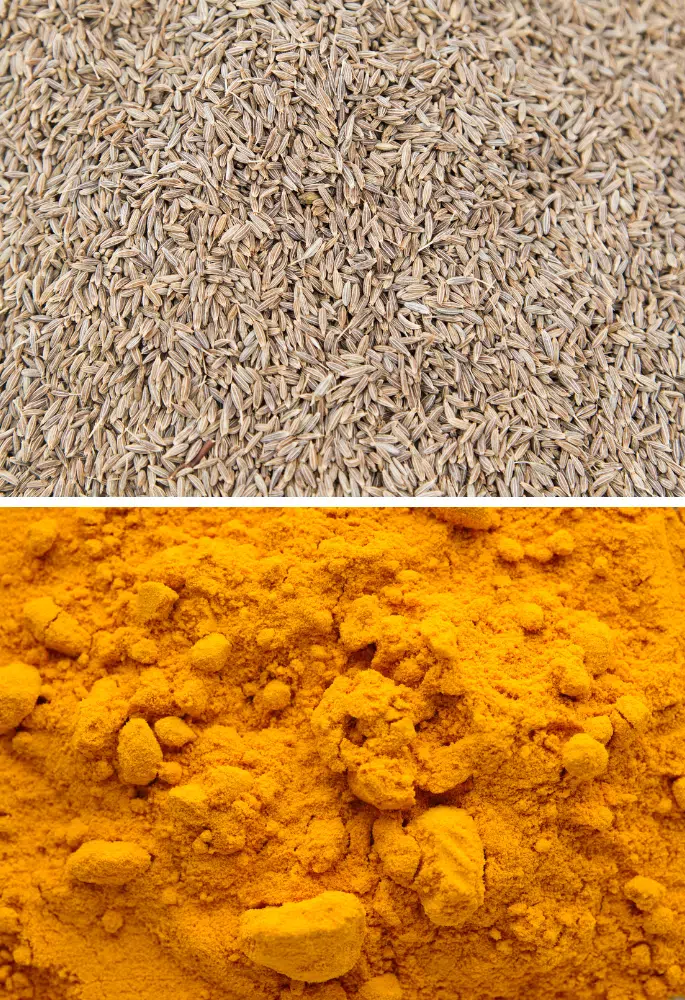Whenever somebody makes the wise decision to suggest salsa and chips, what kind of salsa you choose to use for the chips will make all the difference.
Outside of Mexico, the various kinds of salsa are less well known, but each salsa has its own ingredients, tastes, textures, and characteristics. When acquainting yourself with Mexican cuisine for the first time, you will likely come across two specific types of salsas: salsa verde and salsa roja.
So… how different are these salsas?
The main difference to note between salsa verde and salsa roja is that salsa verde relies on a base of tomatillos, while salsa roja is made using sweet, fresh regular tomatoes.
What is Salsa Verde?
Few sauces in the world are as vividly green and deserving of their name as salsa verde (or green sauce).
While some green-coloured sauces get their colour from various herbs, salsa verde relies only on tomatillos which are a type of fruit related to tomatoes and native to Mexico.

Because of the tomatillos, salsa verde has a distinct tarty flavour that is closer to citrus than a fresh tomato.
Depending on how the salsa verde is prepared, the tomatillos may be roasted, which makes them a little sweeter. But for the most part, salsa verde has more acidity than other salsas, making the salsa more bitter (but not too bitter) and less sweet than you would expect.
However, there is still the heat from the use of chilli peppers as well as the general complex taste and slight additional sweetness from onions and garlic.
As salsa verde literally means green sauce, it can sometimes be used to refer to other green sauces. But in Mexican cuisine, salsa verde usually means a tomatillo-based salsa, as chimichurri is an Argentinian sauce.
What is Salsa Roja?
Though you may not realise it, you are probably more familiar with salsa roja than you would think.
Most jarred salsas sold in supermarkets are a type of salsa roja and are used in the same way that salsa roja is intended to be used—as a condiment, dip, or topping for meat dishes like beef enchiladas.

Translated to literally mean red sauce, salsa roja gets its name from its red tomato base, giving the salsa a vibrant red colour.
As far as additional ingredients go, salsa roja remains very simple to let the sweet acidity of the tomatoes shine. Some onion and garlic are added to the tomatoes to help elevate their flavour, along with a sprinkle of salt and pepper.
The other main ingredient used in salsa roja is chilli peppers as the sauce is supposed to have a notable spicy kick.
Similarities Between Salsa Verde and Salsa Roja
Aside from obviously being salsas, salsa verde and salsa roja have more in common than you would think at first glance:
- Colourful Names – Of all of the Mexican salsa recipes, salsa verde and salsa roja are the easiest to make sense of as their names reflect their ingredients. Salsa Verde (green sauce) refers to the green tomatillo base, while salsa roja (red sauce) refers to the bright red tomatoes used.
- Additional Ingredients – Almost every ingredient except the base ingredient used in salsa verde and salsa roja are the same. Even down to the chilli peppers that add that delicious heat to the salsas. Even if some add coriander to their salsa verde to give the salsa that extra burst of colour, the additional core ingredients that make the two salsas are identical.
- Mexican Favourites – Though Mexican cuisine is rich in various sauces and salsas, salsa verde and salsa roja are very popular Mexican staples. You will rarely find a Mexican household lacking at least one of the salsas at any time.
- Simplicity – Salsa verde and salsa roja are so popular because of how simple and quick they are to make. As such, it is easy to incorporate the salsas into a range of meals or make a large batch to keep as a go-to condiment.
Differences Between Salsa Verde and Salsa Roja
Even the slightest variation in Mexican cuisine can change the whole feel of a dish or ingredient. The key differences between salsa verde and salsa roja can make or break your dish, so keep these in mind:
- Base Ingredients – There is one key difference between salsa verde and salsa roja. Regular fresh tomatoes make the base of salsa roja whereas salsa verde uses tomatillos. Some people think that because of their name, tomatillos are a type of tomato, but that is not true.
- Prominent Taste – As you would expect, because the base ingredient of salsa verde and salsa roja differs, so does their most prominent tastes. Salsa verde has a distinct tartness that comes from the higher acidity and lack of sweetness of the tomatillos. Salsa roja is much sweeter with a bright kind of acidity similar to a citrusy tang.
- Sauce Colour -Like their influence on the taste of the two salsas, the different base ingredients used also change the colour of the salsa itself. Tomatoes at their freshest have a wonderfully bright redness which is reflected in the colour of salsa roja.
Salsa Verde vs Salsa Roja: Which Wins?
You’ve got to pick just one salsa to enjoy for the rest of your life… So, which one do you vote for? It’s verde vs roja, but which wins?
Do You Prefer Salsa Verde or Salsa Roja?
Salsa Verde and Salsa Roja FAQs
Do you have more questions about salsa verde, roja and what makes them different? Then check out these common queries:
Generally, a red salsa will use more spice than a green salsa. A green salsa is often more tart and bitter thanks to the flavour of the tomatillos. Both salsas can have a bit of a kick though – there’s no rule!
Sources
Where we obtain our information and verify the facts in this article:
Jamie Oliver
How to make salsa verde
Chilli Pepper Madness
How to make salsa roja
Acacia may be a freelance writer by day, but they are a food fanatic by night. They are always trying out new recipes or finding different ways to elevate classical dishes. But their biggest culinary aim is to educate others on the basics of the kitchen so that they too can enjoy delicious food.











